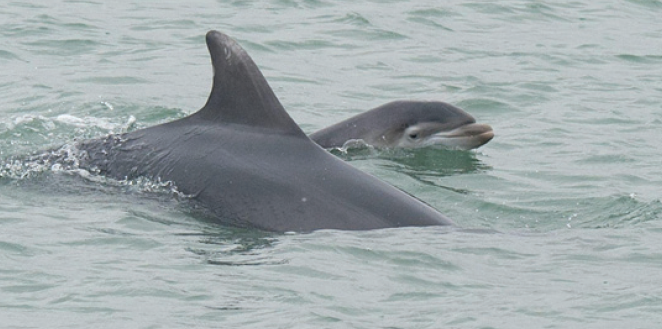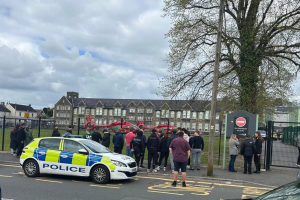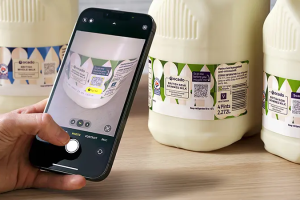
NEW QUAY Sea Watch Foundation witnessed a rare siting of a bottlenose dolphin calf feeding from its mother last Thursday (Aug 4) offering an exciting opportunity for the UK-wide research charity to widen their knowledge of Cardigan Bay’s dolphin inhabitants.
Volunteers begin their shift at 7am and work through to 9pm when the light and weather conditions allow. Sonia, of the research charity, begun her shift on Thursday (Aug 4) and was welcomed by a collection of six dolphins, including a tiny newborn calf.
Although it is not uncommon for the bay’s bottlenose dolphins to appear very close to the harbour wall in New Quay, this occasion was extraordinary as six appeared seemingly out of nowhere and to Sonia’s astonishment, one was a tiny newborn dolphin calf.
On occasion, bottlenose dolphins do use the sheltered waters of Cardigan Bay to have their young. However, Sonia was overjoyed to witness the rare site of the youngster feeding from its mother.
Dolphins, along with whales and porpoises (collectively termed cetaceans), are mammals and produce milk which they feed to their young.
Sonia, Research Assistant for the charity this summer, described the event, stating: “I didn’t know where to look! There was so much happening all at the same time and I could not believe that I had the opportunity to witness a newborn calf being fed.”
Aside from the opportunity to see this special behaviour, there were also four other dolphins in the mix, including ‘Berry’ and her calf, ’Pip’.
Scientists are able to identify individual dolphins by photographing their dorsal fins. Over time, the fins build up nicks and notches which are unique to each animal, similar to a finger print in humans.
Once an animal is photographed and identified, its life history can be determined; which habitats does it prefer, which months is it seen, where does it travel to, how old is it, does it have any young?
Pip was named last year by the public who took part in a naming competition both online and from the pier in New Quay. With three youngsters having been seen in the past couple of weeks, the foundation will be again offering the opportunity to name one of these youngsters.
Using the photo-identification technique, the charity is able to offer an ‘Adopt a Dolphin’ scheme which offers adoptees the chance to follow the fortunes of real wild bottlenose dolphins in Cardigan Bay. The charity is reliant on the scheme for funding, which directly contributes to the well-being of Cardigan Bay dolphins.
Two new calves had been previously spotted in the bay, the first of which was witnessed during a Sea Watch all day survey on July 30, during which its mother was identified as ‘Trouble’ who has been followed by the team of researchers since 1989.
The other calf was photographed by the staff on board Dolphin Spotting Boat Trips on August 3 and the researchers will be working with the boat company to identify the individual’s mother in order to calculate just how many baby dolphins there are in the bay.















Add Comment